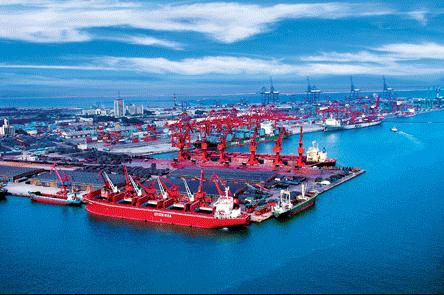
Since the beginning of this year, the global shipping price has continued to fall despite the high base in the previous period, and the downward trend has accelerated since the third quarter.
On September 9, the Shanghai Export Containerized Freight Index released by the Shanghai Shipping Exchange was 2,562.12 points, down 10% from the previous issue, recording a 13-week decline in a row. Of the 35 weekly report data released by the agency this year, 30 weeks of declines have been recorded.
The latest data shows that on the 9th, the freight rates (maritime and marine surcharges) exported from Shanghai Port to the US West and US East base ports were US$3,484/FEU and US$7,767/FEU, respectively, down 12% and 6.6% from the previous issue, respectively. Prices in the U.S. and West have hit a new low since August 2020. On September 2, the US-Western route dropped by 22.9%, from $5,134/FEU on August 26 to $3,959/FEU. It has fallen by more than 30% in the past two weeks. Since the price on July 1 was US$7,334/FEU, the US-Western route has fallen by more than 50% since the third quarter.
Considering that the price of some US-West routes exceeded US$30,000 last year, the freight rate of this year's US-West routes has dropped by 80-90% compared with last year's high point.
The Shanghai Shipping Exchange report pointed out that the recent performance of China's export container transportation market is relatively sluggish, and the transportation demand lacks growth momentum. As far as the North American route is concerned, the future economic outlook is facing a situation of stagflation at a time when the Fed will continue to take tightening measures to curb inflation. In the last week, the performance of the transportation market failed to improve, and the fundamentals of supply and demand were relatively weak, which led to the continued downward trend of market freight rates.
It is worth mentioning that the Shanghai Composite Export Container Freight Index shows that the freight rate has fallen for 17 consecutive weeks from the high point at the beginning of the year, then rebounded for 4 weeks, and then fell again for 13 consecutive weeks. In late July, it fell below the level of the same period last year. The market has been falling and falling, and even intraday losses can reach hundreds of dollars.
At the end of June, the share price of the shipping sector has experienced a wave of oversold conditions. Affected by the still strong second-quarter earnings report, the stock prices of most shipping companies have subsequently recovered significantly, and investor sentiment has risen. However, due to the continuous decline of shipping prices, the stock price of the sector has turned down again recently, and the stock prices of Maersk, Evergreen, Yang Ming and other companies once recorded new lows this year.
In early September, some listed shipping companies disclosed their performance in August, which also showed a decline in the market. In August, Wanhai's revenue was NT$21.3 billion, the lowest level in the past year, down 13.58% from the same period last year; Yang Ming's revenue reached NT$35.1 billion, a year-on-year increase of 7%. Evergreen Shipping's revenue was NT$57.4 billion, a year-on-year increase of 14.83%.
On September 7, Zhang Shaofeng, business manager of Yangming Shipping, admitted that he was too optimistic about the stabilization of freight rates in May, and the market downturn exceeded expectations. The container shipping company was indeed under pressure from shippers to renegotiate contract freight rates.
Zhang Shaofeng said that due to inflation suppressing consumption, freight rates are continuing to “normalize” due to the reduction in cargo volume. The abnormal situation where freight rates on the European and American routes have soared to five figures in the past two years is no longer normal, but it will not return to the epidemic situation. The low water level around the first 2,000 US dollars will be seen after October. If the economic outlook develops in a positive direction, shipping is expected to benefit, and the freight rate will have the opportunity to stop falling or even rebound.
Co Ansu, president of Maersk's Asia-Pacific Shipping Operations Center, pointed out earlier that Asia's shipping operations are relatively stable, and the company is now focusing on Europe: Europe faces challenges such as strikes, drought-induced river water levels, and a shortage of truck drivers. The priority of the Maersk Asia team is to minimise the impact of these issues through global collaboration, closely monitor developments and ensure timely and up-to-date information for customers to help them meet the challenges of global supply chains.
A report released by Maersk earlier pointed out that the economic outlook of major Western economies is weak, and consumer demand remains sluggish, resulting in a mediocre peak freight performance this year.
Chen Zhen believes that the global container shipping market is still not optimistic in the fourth quarter, and there will be a sluggish market in the peak season, and the freight rate will fall further. The freight rate in the fourth quarter is definitely far lower than the level of the same period last year, and even worse than the third quarter of this year. In addition, the amount of new ships launched in the next four months of this year is relatively limited, but there will be concentrated launches in the next two years, and more countries will relax epidemic control, and the pressure on capacity supply will increase sharply. Next year, the spot freight rate will be further weakened, and the long-term freight rate next year will also be greatly reduced.
Previous:Port yards will be overwhelmed with a forecast of a surplus of 4.3 million containers by early next
Next:Shipping prices upside down! The price war is coming